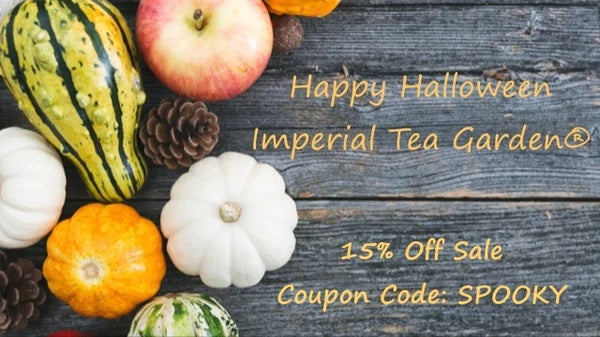How To Buy the Best Loose Leaf Tea - Part 5
How to Buy the Best Loose Leaf Tea
The last part of this five part series examines the final crucial element in producing the best quality loose leaf tea. Processing the tea after harvesting is the final step that makes or breaks each harvest. Each region has their own specialty teas based upon the type of cultivar that is best suited for their climate but after selecting the right cultivar, planting and harvesting, one crucial step remains. Processing the tea according to the type of tea desired to yield white tea, green tea, oolong tea or black tea. Any mistakes at this point can ruin a tea garden or tea masters reputation.
Tea Cultivation, Processing and Classification
Cultivation
Young plants are raised from cuttings obtained from a mother bush and they are carefully rooted and cared for in special nurseries until they are 1 to 2 years of age. The mother bush is carefully selected for propagation based on individual properties and yield. The tea plants can then be transplanted out in the tea fields. This process is known as cloning. Tea can also be grown from seed, however, due to the degree of difficulty, cloning is the most widely used method of cultivating tea. Tea bushes are planted from three to four feet apart and planted in rows which follow the natural contour of the landscape. Tea is also grown on specially prepared terraces to improve irrigation and to prevent soil erosion.
Pruning and Plucking
Tea bushes are usually pruned every 3 or 4 years at 1-3 inches above the last pruning cut. This type of pruning is called light pruning. Trimming back encourages new shoots to form and increases yield. Regular pruning cycles encourages a fresh supply of new shoots and further increases yield. Pruning also maintains the shape and vitality of the overall tea bush.

Harvesting fresh young shoots from the mature tea bushes is known as plucking. The location of the leaves relative to the tea bush greatly determines the quality of the finished product. The youngest emerging buds are often reserved for the finest quality teas and are graded as flowery pekoe or more commonly known as tips. The next set of leaves from the end of the growing stem are classified as orange pekoe and pekoe respectively. The older and largest leaves closes to the main stem are called souchong. Although this initial grading during the plucking phase can determine the final product value, it is the handling and manufacturing techniques that will weigh in the most when determining market price at auction.
Harvesting is carried out throughout the growing season and is referred to as the "flush" of a particular tea. The flush of a particular tea is determined at the time of plucking. "First flush" is known as the early spring plucking of new shoots. "Second flush" is harvested from late spring through early summer, yielding teas with more body and fuller flavor. While autumnal flush is the late season harvest. Harvesting is a skilled job traditionally carried out by women and done by hand. Expert care is taken while plucking the shoots. The leaves are carefully pinched and twisted when removed from the tea bush. Handfuls of shoots are then placed into the carrier baskets resting on their backs. After the tea is harvested in the fields, it is brought directly to the tea factory where it is further processed.
Withering and Rolling
The withering process begins by evenly spreading the shoots out on trays, or fine meshed screens. Withering takes place in open air room utilizing the effect of natural breezes to wilt the leaves or, in special facilities with controlled heating and ventilating equipment. Regardless of the facilities used, the withering process effectively reduces the moisture content to about 50% of its natural state. The leaves become limp and flaccid, and are now suitable for rolling.
The purpose of rolling is to rupture the cells. During this process, plant enzymes are released and begin a chemical reaction when exposed to oxygen. This process can be done mechanically or for high grade teas, rolling is still done by hand. A wide range of equipment can be used for this process, including the traditional orthodox method or the C.T.C method. After rolling the tea leaves are prepared to go through to the next stage of processing. This is the point at which tea classifications such as green tea, black tea, and oolong tea differ based upon the amount of time allowed for the plant enzymes to chemically react with the open air. This chemical reaction is known as oxidization.
Oxidization
Oxidization, commonly referred to as "fermentation", is the most important stage in the manufacturing of oolong and black teas. This process makes it uniquely different from green tea which is not allowed to oxidize. Green tea skips this process and proceeds directly to the firing ovens to reduce the moisture content. Oxidization is carried out in
custom designed facilities. Depending on the temperature, technique and the style of tea desired, oxidization time can range from 45 minutes to many hours. The characteristic color and aroma determine the completion of this process based on tradition and knowledge. Great skill is needed during this phase because it can dramatically affect the finished product if proper timing and air circulation are not followed.
Firing and Sorting
Firing halts the oxidization process by subjecting the leaves to a stream of hot air. Temperatures between 190–210 degrees Fahrenheit are required for about 20-30 minutes to produce black tea with a moisture content of 2-3 %. The dried tea is sorted into different grades by passing it over a series of vibrating screens of different mesh sizes. The passage of teas through this system produces a number of grades with evenly sized particles. Teas are then packaged according to particle size and sold as dust, fannings, broken leaf, or whole leaf grades.

Types of Tea
All tea comes from the evergreen tea bush (Camellia Sinensis). The following terms only describe tea leaves after they are harvested from the tea bush and processed for consumption.
Tea is classified into three basic types with smaller variations within each group:
1) GREEN TEA
2) OOLONG TEA
3) BLACK TEA
Green tea does not undergo the oxidization process. It has a herbaceous flavor and is green or yellowish in color. The leaves are sometimes steamed after which it is rolled, fired and sorted. Oxidization is a chemical reaction that takes place when tea leaves are picked and begin to wither and die. Green tea is not allowed to oxidize and is quickly dried, pan-fried or oven fired to dehydrate the tea leaves for storage. This process retains many of the polyphenols, catechins, and flavonoids that are associated with the health benefits of drinking green tea.
White tea can really be thought of as a subset of green tea. White tea is picked before the leaf buds fully open and are still covered with fine silky hairs. The delicate buds are quickly air dried to produce some of the rarest and most expensive tea available. White Tea is said to have three time more antioxidants than green or black tea. Researchers for some of the large cosmetic companies have become very interested in white tea in recent years. The polyphenols in white tea have been shown to be very effective in mopping up free radicals that can lead to aging, and wrinkles, and sagging skin but at Imperial Tea Garden, we offer green teas and black teas with equally high levels of antioxidants.
Oolong tea falls somewhere between green tea and black tea in the amount of time the tea leaves are allowed to oxidize. Oolong tea is partially oxidized and prepared by withering, rolling, fermenting and then drying. The oxidization process continues for a predetermined time based on the master's skill and knowledge. Two terms often used to describe oolong tea are “green” and “amber” style. The “amber” styles are allowed to oxidize slightly more than the “green style” oolong tea. This results in a variety of smooth teas available that bear the makers style and tradition.
Black tea is fully oxidized and often yields a full-bodied amber brew. It undergoes five basic manufacturing stages: withering, rolling, fermenting, firing and sorting. Black tea is allowed to oxidize which “ripens” the tea and creates a deep, rich, robust flavor with uniqueness based on the tea grower’s knowledge and skill. The oxidation process is commonly referred to as fermentation. This is technically incorrect because "fermentation" is a process in which yeast is converted into alcohol and sugar is converted to and released as carbon dioxide gas.
Pu-erh tea comes from the Yunnan province in China. Pu-erh tea has a distinct earthy aroma. This type of tea differs from other formed black tea because it is allowed to grow a thin layer of mold on the leaves. Of course these are harmless cultures and are reputably known in China for their medicinal effects. This makes sense because the antibiotic penicillin was first discovered through mold cultures.
Scented teas are produced by harvesting the fragrant flowers like jasmine blossoms and layering them in with the harvested tea leaves. Warm air is circulated through the mixture and the tea leaves become infused with the scent of the flowers.
It should be noted that herbal tea or herb tea is not really tea at all, since they do not contain leaves from the tea bush (Camellia Sinensis). Herbal teas are made from seeds, roots, flowers, or other parts of plants and herbs. They are often blended to make unique tasting infusions and more formally known as tisanes. Medicinal teas are herbal teas that are used for the treatment of ailments. These teas are gaining acceptance in western culture.
Click the following links to get more information on how to buy the best teas online
Leave a comment
Comments will be approved before showing up.




Imperial Tea Garden
Author